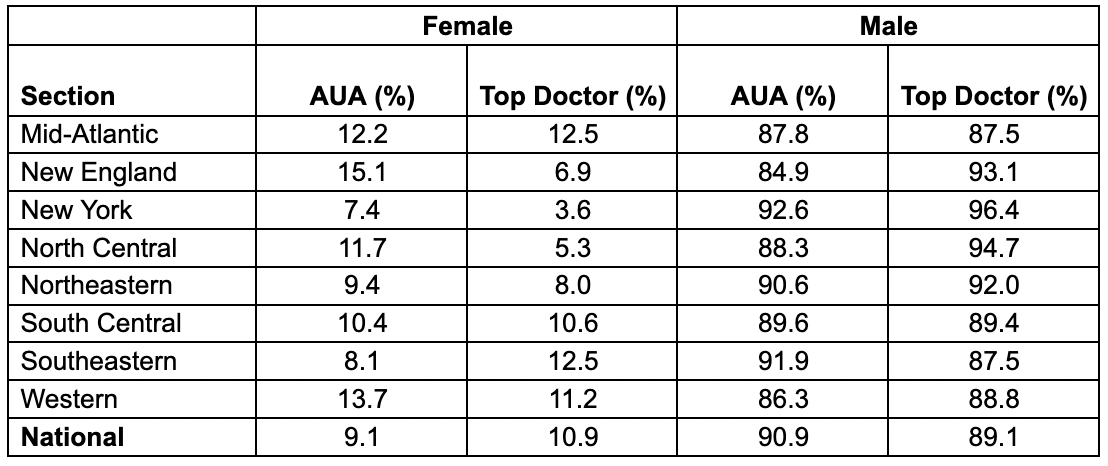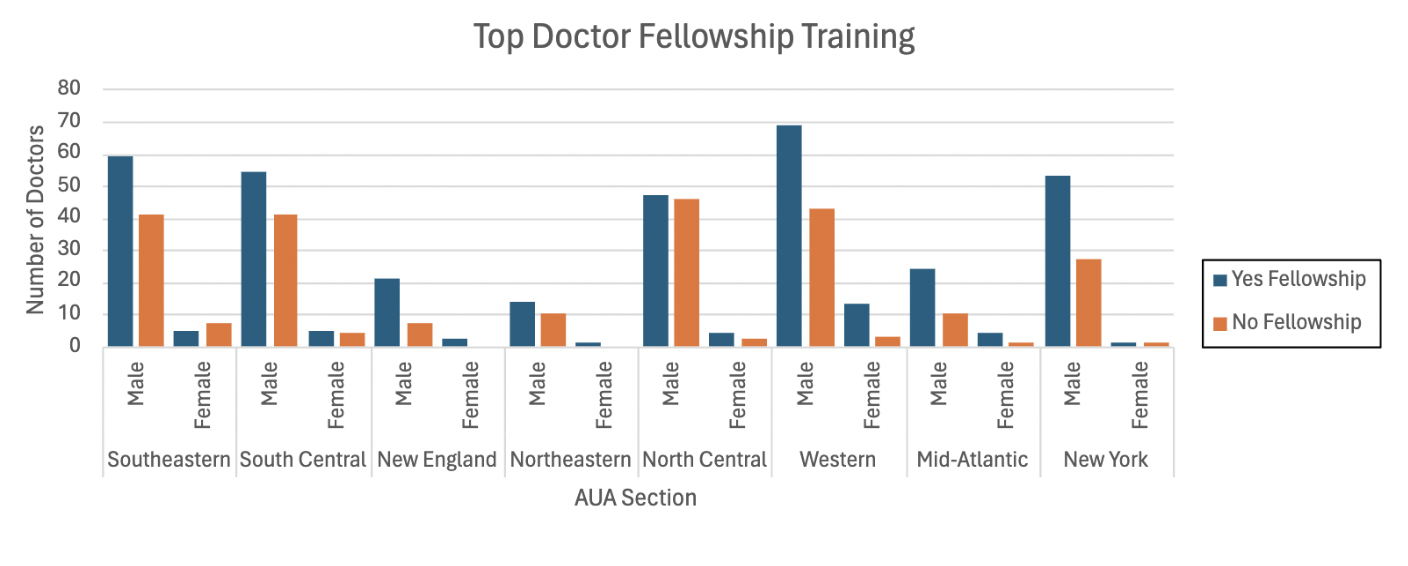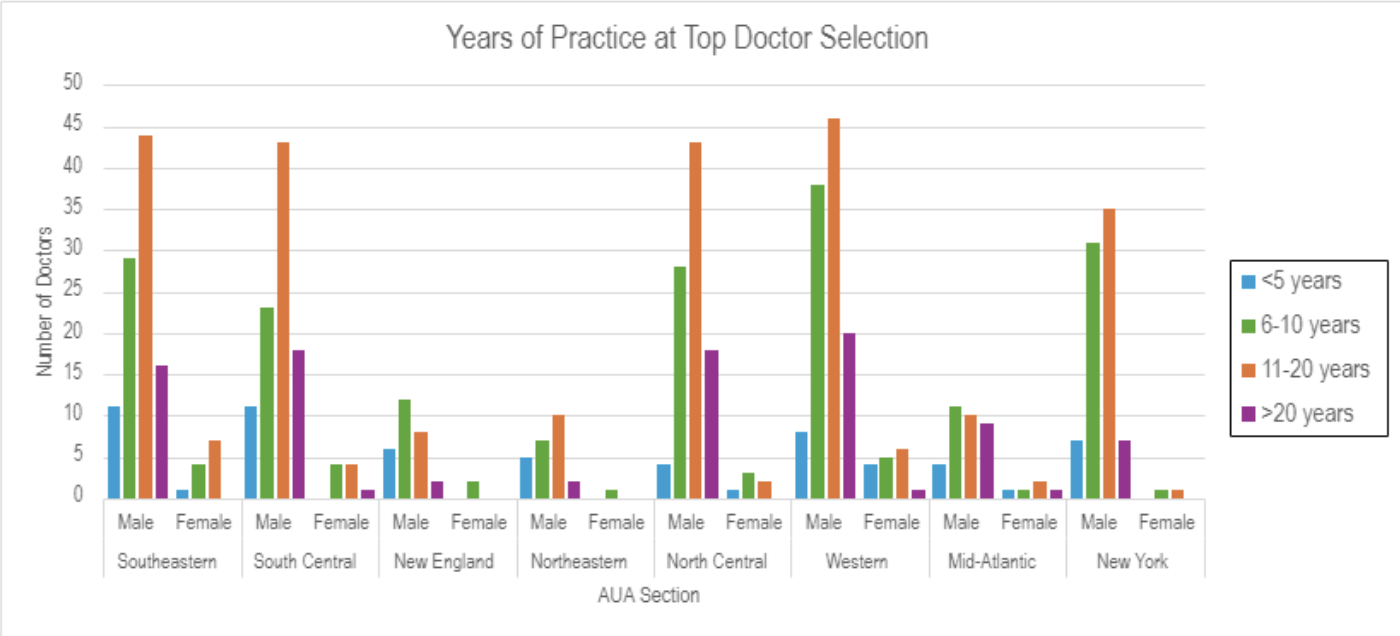BACKGROUND Every year, Castle Connolly releases a list of “Top Doctors” selected from over 985,000 practicing physicians in the United States. The organization collects peer nominations via survey and then evaluates nominees based on qualifications, education, leadership, research, professional reputation, and disciplinary history.Urology has persistently lagged behind other specialties regarding representation of women physicians. The aim of this review was to assess the representation of female urologists on the Castle Connolly Top Doctors list.METHODS: Top Doctor Urologists were obtained by reviewing the Castle Connolly website, first by searching “Location,” then by the specialty “Urology.” Data collected included physician gender, fellowship completion, fellowship type, and years of practice as calculated from the year of residency or fellowship graduation. AUA section data of practicing urologists with gender breakdown was collected from the published 2021 AUA census. Analysis of fellowship education and years of practice was completed using the chi-squared test.RESULTS: Nationally, there are equivalent rates of female Top Doctors and practicing female urologists (10% vs. 9%). When evaluating by section, the MidAtlantic (12.5% vs. 12.2%), Northeastern (8% vs. 9.4%), South Central (10.6% vs. 10.4%), and Western sections (11.2% vs. 13.7%) have comparable rates of practicing and Top Doctor females. The New England (6.9% vs. 15.1%), New York (3.6% vs. 7.4%), and North Central (5.3% vs. 11.7%) sections have a notably lower proportion of female Top Doctors than practicing female urologists. When comparing the Top Doctors’ fellowship training and years of practice at the time of selection, there was no difference between male and female urologists in any section. A higher percentage of women practicing urologists have completed fellowship compared to their male counterparts (58.8% vs 32.5%).CONCLUSIONS: With more women entering the field of urology each year a proportional increase in the number of female Top Doctors would be anticipated. However, the proportion of female Top Doctors for three sections of the AUA, New England, New York, and North Central, lag behind their sectional gender representation of practicing female urologists. When assessing the Top Doctors level of education and years of experience, there is no difference between the genders in any section. Additionally, among urologists nationally, women especially those under the age of 55, are more likely to be involved in research and be fellowship trained. This raises suspicion about the peer nomination and review processes if women excel in the selection criteria yet fall behind in Top Doctor selection.


